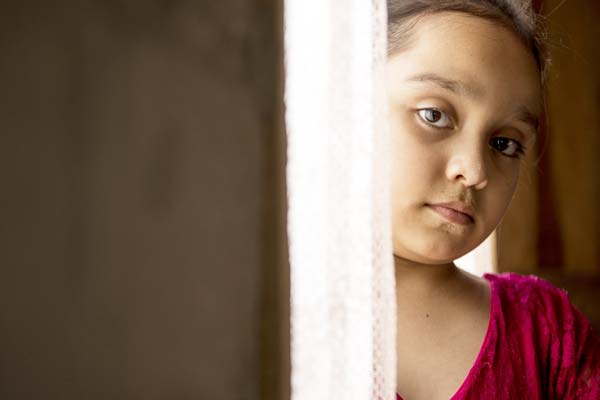Site will be
unavailable for maintenance from June. 4, 11:30 p.m., to June 5, 12:30 a.m. ET. Thank you for your
patience!
New Tools for Ending Violence Against Girls in Central America
By Mario Lima and Erin Kennedy Posted on 10/12/2018

Yeimi, 10, lives in a community rocked by violence in Santa Barbara Department, Honduras. ChildFund carries out sponsorship and other programs aimed at combating violence in communities.
According to most measures of the world’s well-being, countries are better off than ever. But the chasm between the haves and the have-nots has grown. In Latin America’s Northern Triangle countries, which lack social safety nets like those in the United States, income inequality perpetuates the rampant violence for which the region is known. Children in marginalized communities are the most vulnerable — especially girls.
The story of girls in Central America too often goes like this: Organized crime moves into poor communities, targeting disenfranchised boys for gang recruitment. The boys capture girls to be their partners. The girls become pregnant and the boys abandon them, leaving them with no skills, limited options and, in their arms, a member of a new generation of prey for gangs.
Parents try to protect their girls by strictly controlling them, forbidding them from going outside, into town or, often, even to school. Enforcing these restrictions through harsh corporal punishment, parents do not understand how their fears harm girls’ development. It’s no surprise that children in the region cite home as the most violent place in their world. But violence permeates the entire ecosystem in which children grow up, including school and the community. For girls, violence is not only physical but also psychological, sexual and economic. It is also a source of shame and, thus, rarely reported.
Organizations like ChildFund International have much to contribute toward helping children and families address the violence surrounding them. We know that effective responses to violence against children must be informed by children’s perspectives and must involve them in finding solutions. Worldwide, ChildFund does this through working with community members to map out local places and patterns of violence, consulting children themselves about their perceptions of risks and resources, including people, that can help reduce dangers.
Using this approach in Guatemala, we found that different causes of violence are tied to different environments: In the home, intrafamily conflict and family disintegration are primary causes; in school, teachers’ and students’ lack of accountability leads to abuse; and in the community, economic insecurity and weak social cohesion are drivers. Risks specific to girls include harassment at school and rape on the road. These conversations led to a new community-wide understanding of how to better protect children locally.
In Honduras, a recent project disrupted a pattern of school-related violence. With funding from USAID and in partnership with Honduras’ Ministry of Education, our PUENTES project educated teachers and parents on how to make their own behavior less violent and thereby transform children’s behavior. Results included a 56 percent decrease in violence at school, greater parent involvement in school communities and, at home, less physical punishment, greater communication and improved supervision of children.
ChildFund and our local partner organizations don’t deliver all the solutions, but we know that when parents, children, teachers, government officials and society in general partner together, they will find or create solutions — and, importantly, take ownership of those solutions. The fact that tools like participatory mapping and those used in PUENTES can lead to better relationships in families, schools and communities is not only a bonus; it is the key to sustainability. And for girls, strengthened parent-child relationships have an especially salutary effect as their caregivers learn to see them as worthy of the same opportunities as boys, even in violent, unstable environments.
The international community’s recent conversations about violence against children inspire further hope. There is global agreement around what works, adopted by the U.S. government and enshrined in the World Health Organization’s INSPIRE package of evidence-based strategies to protect children. The U.S. is a critical partner for the Northern Triangle, and ChildFund urges the U.S. government to leverage tools of diplomacy and development and follow congressional leaders in maintaining strong funding for the international affairs budget.
Because political will multiplies the power of dollars, ChildFund also urges members of Congress to cosponsor and pass the Ending Violence Against Children Resolution (H.Res.910 and S.Res.606). This is a critical step in amplifying the U.S. government’s role in partnership with the global community to ensure that the world’s children grow up healthy, educated and safe.
For girls especially, we have a long way to go.
Erin Kennedy is ChildFund’s Director for Advocacy, and Mario Lima is ChildFund’s Regional Director for the Americas.
Loading...



